As an African whose ancestors were major victims of slavery and the slave trade, I read a few historical articles about slavery in secondary school, and every time I read them, my stomach turns. Since humans have more power (technical power, not physical strength) to dominate other people, it seems inconceivable that they would capture them and use them as slaves.
For this reason, I frequently assert that humankind has paid a price for technological advancements that have nothing to do with money. A group of individuals may consider themselves to be superior and that others should be at their whim and under their control simply because they can create a weapon that can kill a large number of people at once.
Long before the European slave trade began, conflicts between communities and battles in Africa led to the first slave trade. Humans are captured as part of war rewards and sold into slavery by warlords or kings of winning communities. Slave owners even went so far as to trade or sell their slaves for other people.
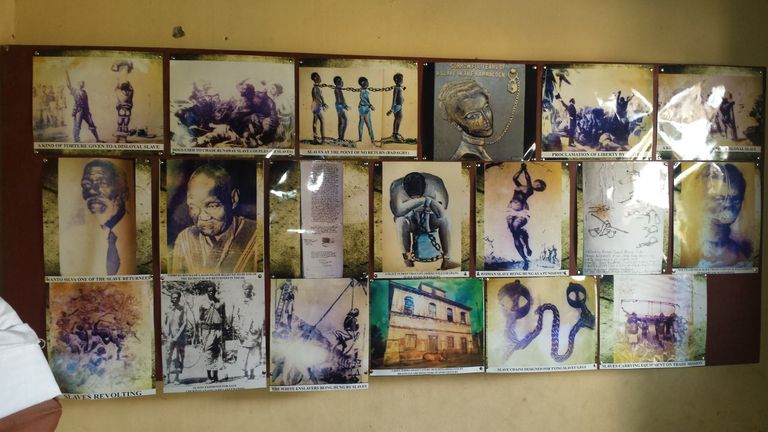
The infamous European slave trade thrived because Europe had more advanced technology than Africa at the time colonialism started. Every day, tens of thousands of people, both men and women, are transported abroad and sold into slavery. Communities are pillaged, fit men and women are abducted, and unfit people are exterminated.
Without the cooperation of the locals, notably the local leaders in the form of kings and powerful individuals, the intrusion into the diverse communities would not have been simple for the European slave holders. The European slave masters used powerful Africans (the kings, rulers and warlords) as access points to slaves.
The powerful Africans like the warlords assault and invade communities, capture individuals who are suitable for slavery, and then trade these people for the most insignificant items, such as weapons, wine bottles, mirrors, glass plates, and so on. These local warlords' influence is further increased by the weaponry, and their slavery businesses prosper as a result.
Many people who were sold into slavery accepted their situation and labored as required by their owners. Many of the slaves who attempted to reclaim their freedom or disobeyed their lord's or owner's orders either get slaughtered or received harsh punishment. Slavery and owning slaves became commonplace for many people as generations went by, infact most of the powerful and rich individuals turn this into business and they begins trading slaves. According to my research, any slave who attempted to escape from slavery was viewed as being mentally ill because being a slave or a slave owner had become a trade and lucrative one, and the urge to flee slavery was diagnosed as a mental condition known as drapetomania
Although slavery is no longer practiced, history will never forget it. In Africa, Nigeria in particular there are many conversations centers that still include some remnants of the slave trade and slavery. Below are some of the photographs I was able to take during my visit to the Badagry, Nigeria, slave trading center last week, along with explanations of each photograph.
The Slave Trade Port, Badagry, Nigeria
Badagry is well renowned for being a harbor for the slave trade. Being a coastal village on Lagos's outskirts, the port was very useful to the slave traders. From this port, all kidnapped or acquired slaves are transported to Europe. The port is still there today as a reminder of slavery. The port is infamously referred to as the "point of no return," a moniker that describes what will happen to any slave who reaches that point. I was unable to access the harbor itself, so I took the picture you see below from a distance.
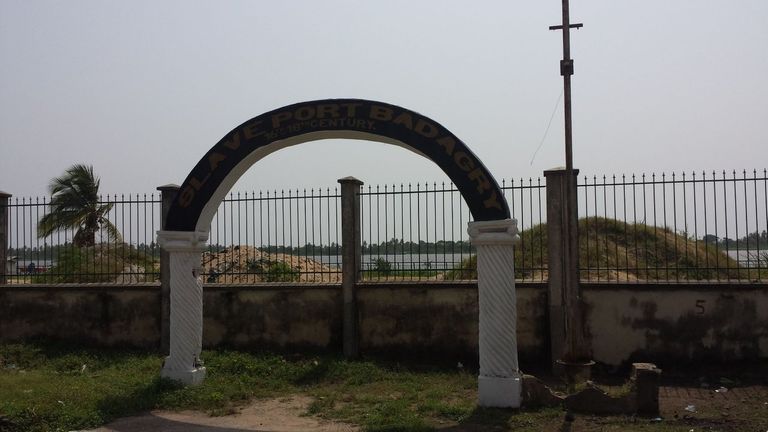
The Museum of Slave Artifacts, Badagry, Nigeria.
The museum of slave artifacts is located within a few meters from the slave port. This modest museum is a memorial to a well-known slave dealer from that era. The salve trader, who goes by the name of Seriki Abass, specialized in kidnapping and selling other Nigerians to European businessmen. He allegedly ran a slave cell with only a few rooms and housed no less than 40 slaves in each one.
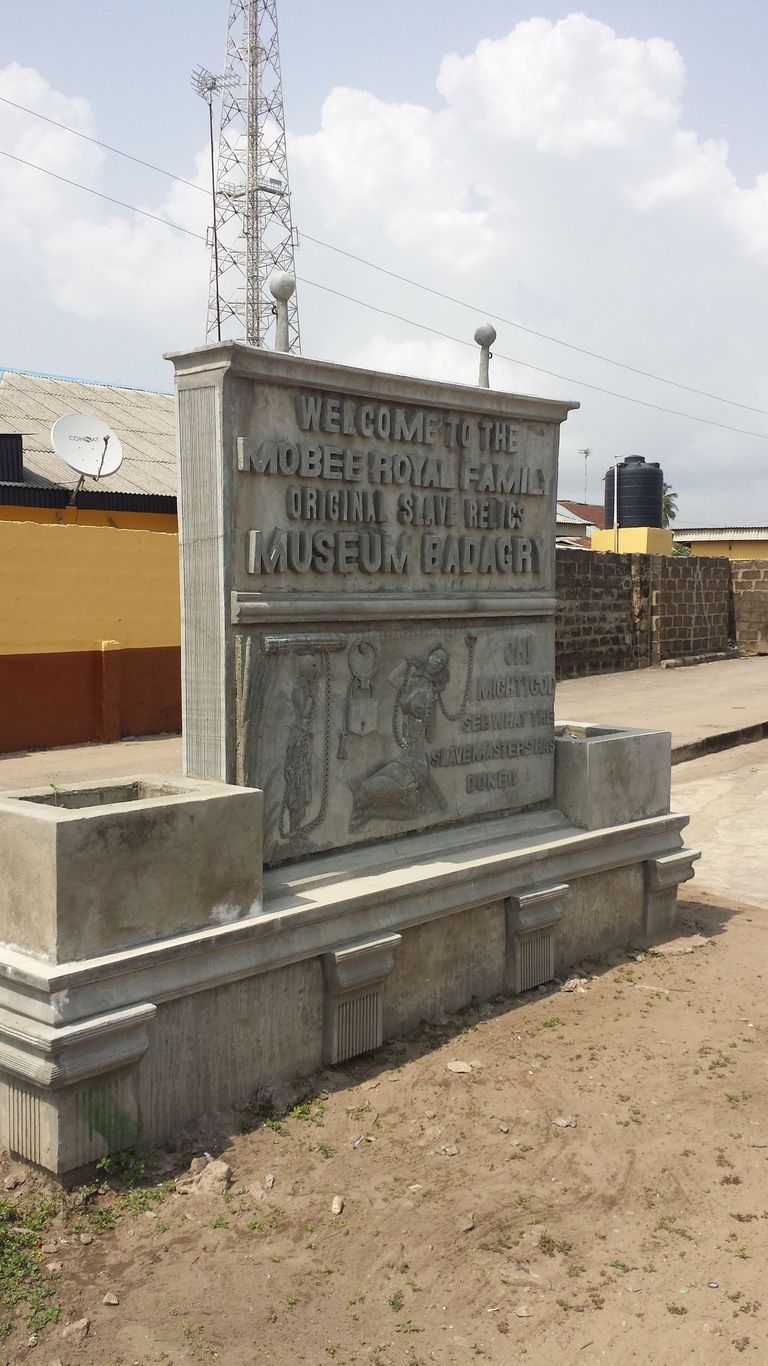 | 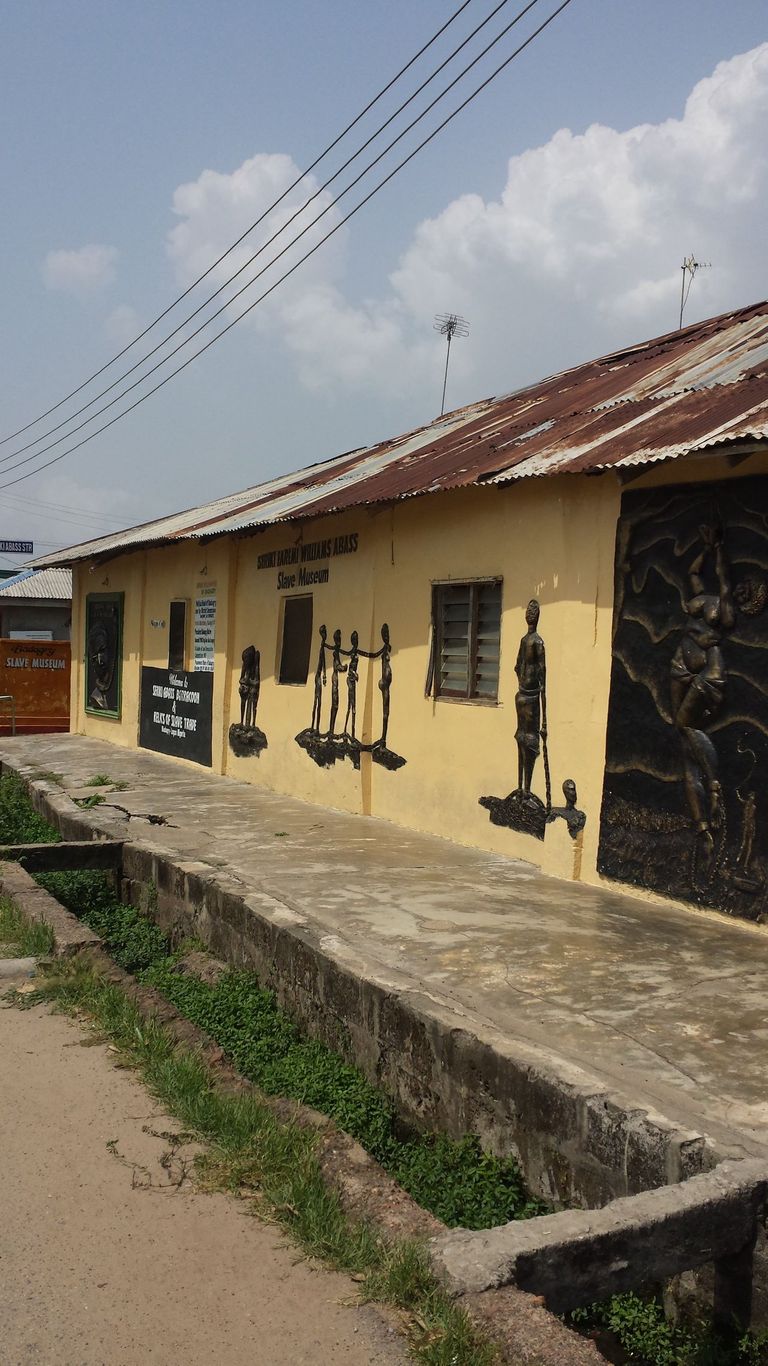 |
|---|
You must pay the tour guide N2,000 to enter the museum, but as I was the only person present, I chose to haggle and ultimately agreed to pay N1,500, and the museum was opened. The entryway to the slave cell was the first thing I saw, and it was decorated with slave-portrait artwork.
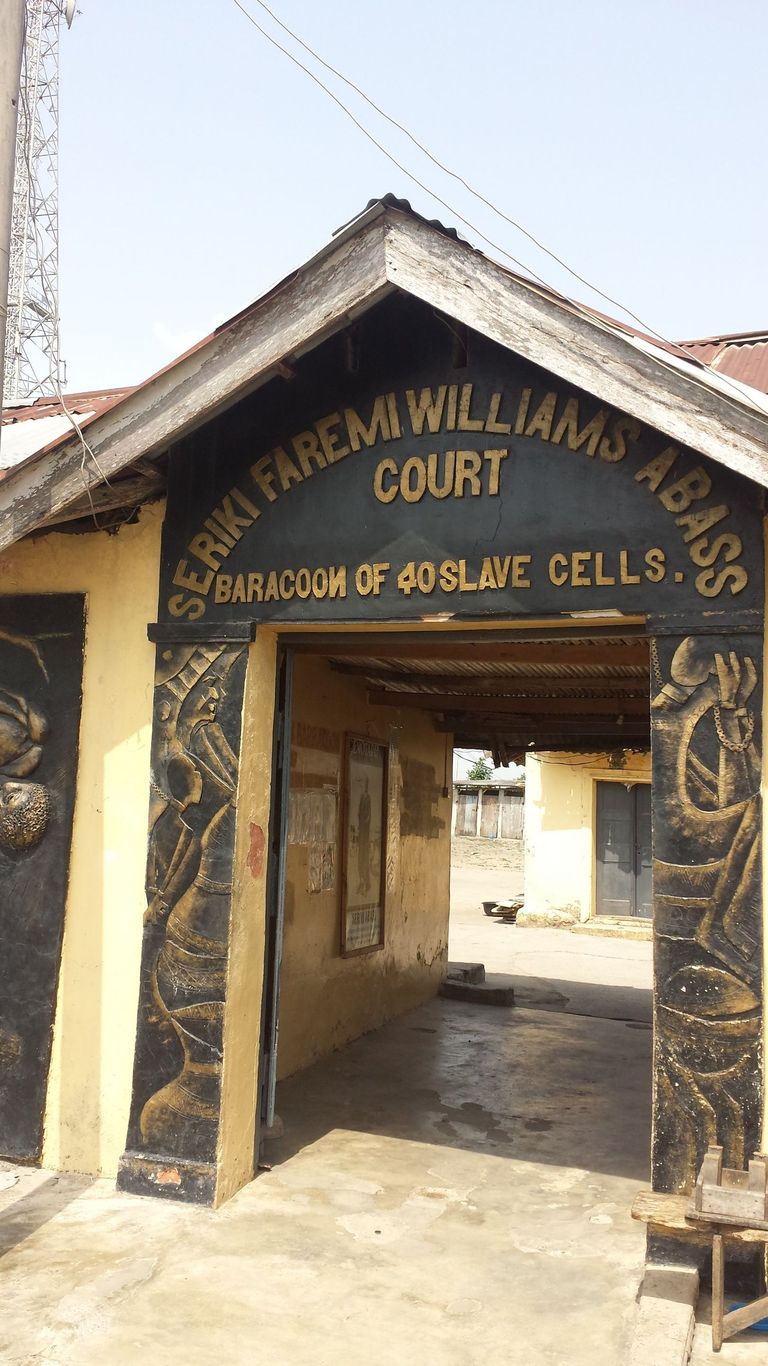
The cell. Each one is only 10 x 12 meters in size and is said to have held 40 slaves each. I still wonder how those slaves managed to survive in such a small space with so little airflow; it must have been a very dreadful and unpleasant experience for them.
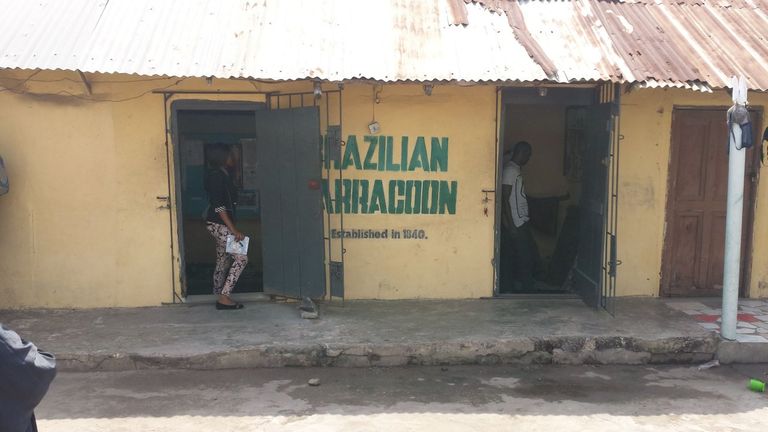
The tour guide led me to a chamber with some wall-mounted artwork that depicted some of the tools that European slave traders used to exchange for whole humans beings. cannons, brass dishes, kettles, mirrors, ceramic bowls, and alcohol bottles.

Some of the chains used to restrain the slaves are stored in the same chamber. Depending on how powerful a slave is, the chains have various levels of straps and metals.
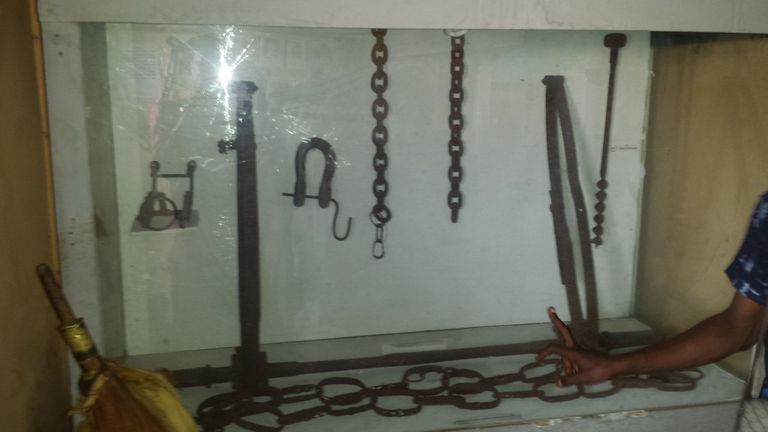
The chain below is used to strap or lock more than two slaves at once, more akin to a group of slaves. This is frequently used while transporting slaves. A customized box was used to store the chain.
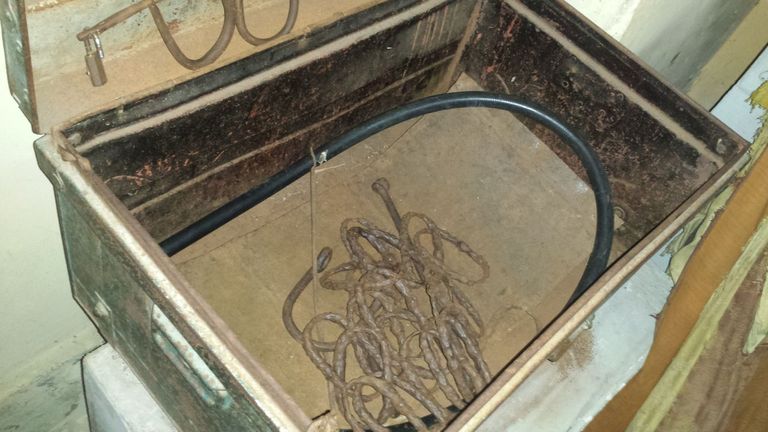
I was escorted to another chamber, which was completely different from the first one; it contained old camera lenses, plates, lanterns, and other items that the slave masters once utilized. Some of the porcelain bowls the slave trader received in return for slaves.
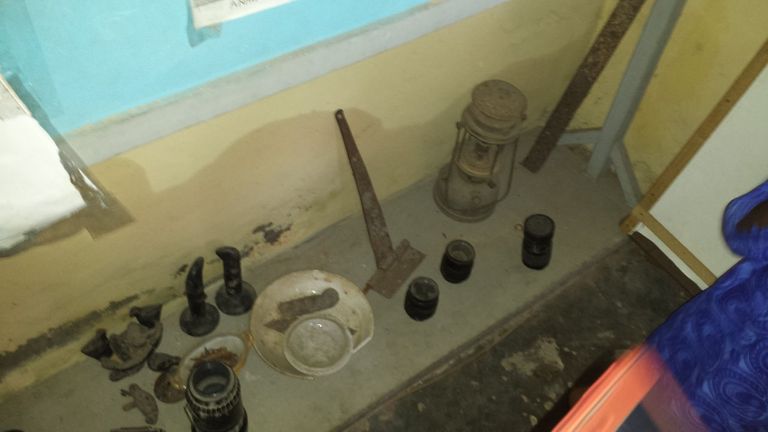
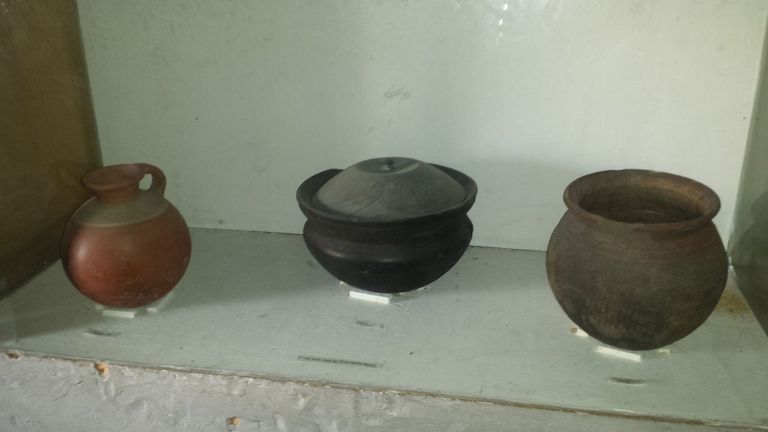
I was eventually shown to the last chamber, which had exquisite artwork and some old slave-related photographs presented on the walls of the slave cells.

Herein lies the tomb of the famous slave trader, Seriki Abass, and there's a wall opposite it where a big portrait of Seriki Abass was hung.
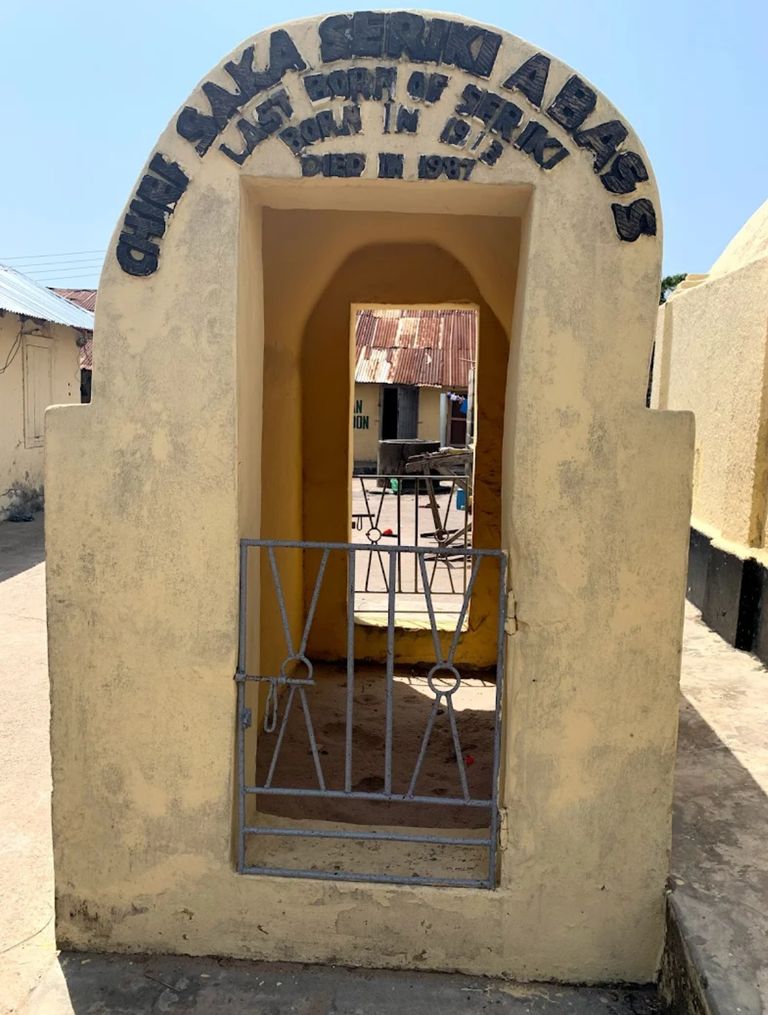 | 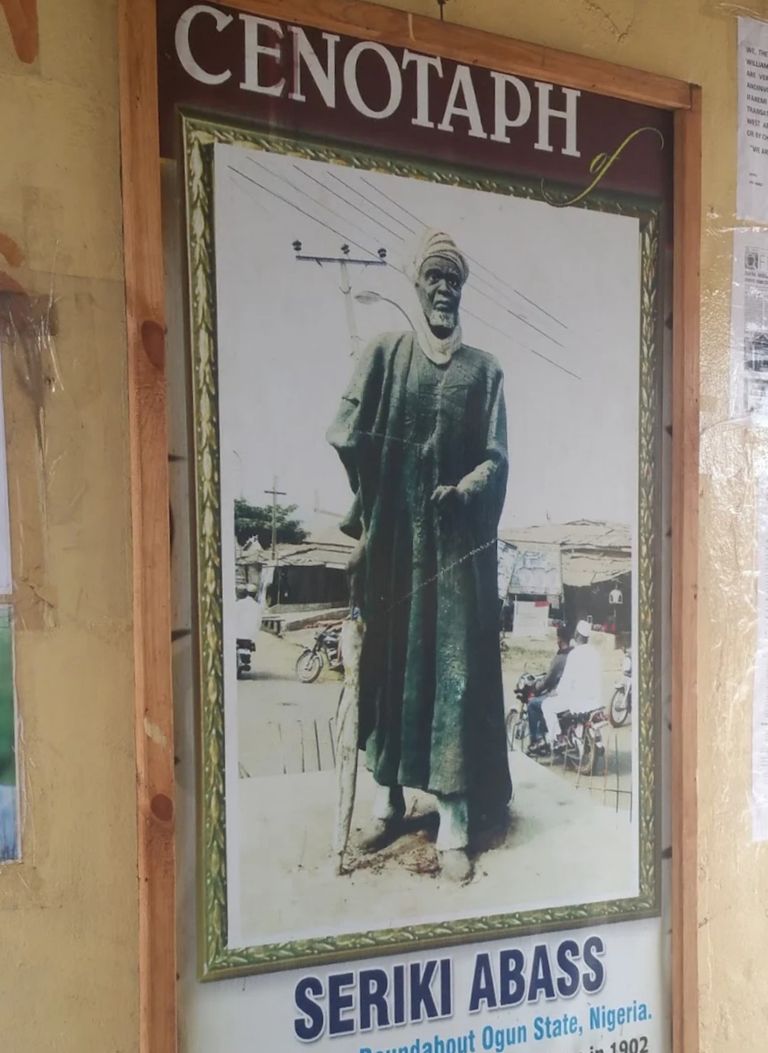 |
|---|
Overall, there wasn't much to see in the slave museum, but the few artifacts that had been conserved nevertheless provided insight into the events that took place. In order to tell the tale of slavery and the slave trades, it is hoped that these artifacts will be kept for as long as possible. Slave traders, in my opinion, shouldn't be honored but also shouldn't be erased from the subject's history.
Sadly, some current events demonstrate that slavery is still present in some parts of the world. Slavery, if you understand what I mean, actually took on a different form rather than truly disappearing. However, it appears that some parts of the world are still using the ancient kind of slavery.
Do you still believe that humans are the most developed species among all animals?
Want To Understand More?
You should read the book Slavery and Slave Trade in Nigeria - From Earliest Times to The Nineteenth Century if you're interested in learning more about the history of the slave trades in Nigeria. Through this book, I have a better understanding of some historical occurrences from that time period, including how the Yorubas turned the slave trade into a profitable business. J. F. Ade Ajayi and Okon Edet Uya are the authors of the book.
You can purchase the book from any closest physical or online bookstore or download the E-book
Hi, @mato445,
Thank you for your contribution to the Blurt ecosystem.
Your post was picked for curation by @henryglowz.
Please consider voting for our Upkeep Proposal by Symbionts.